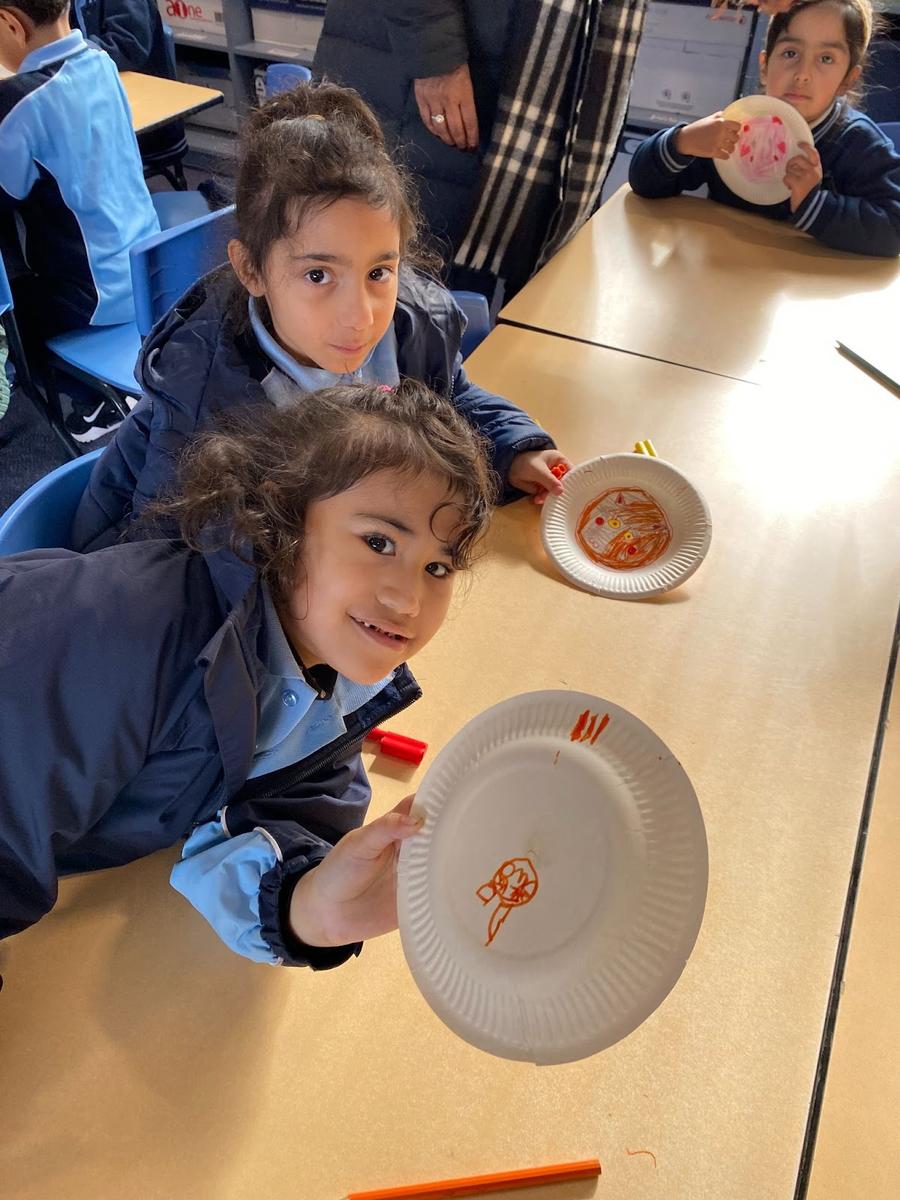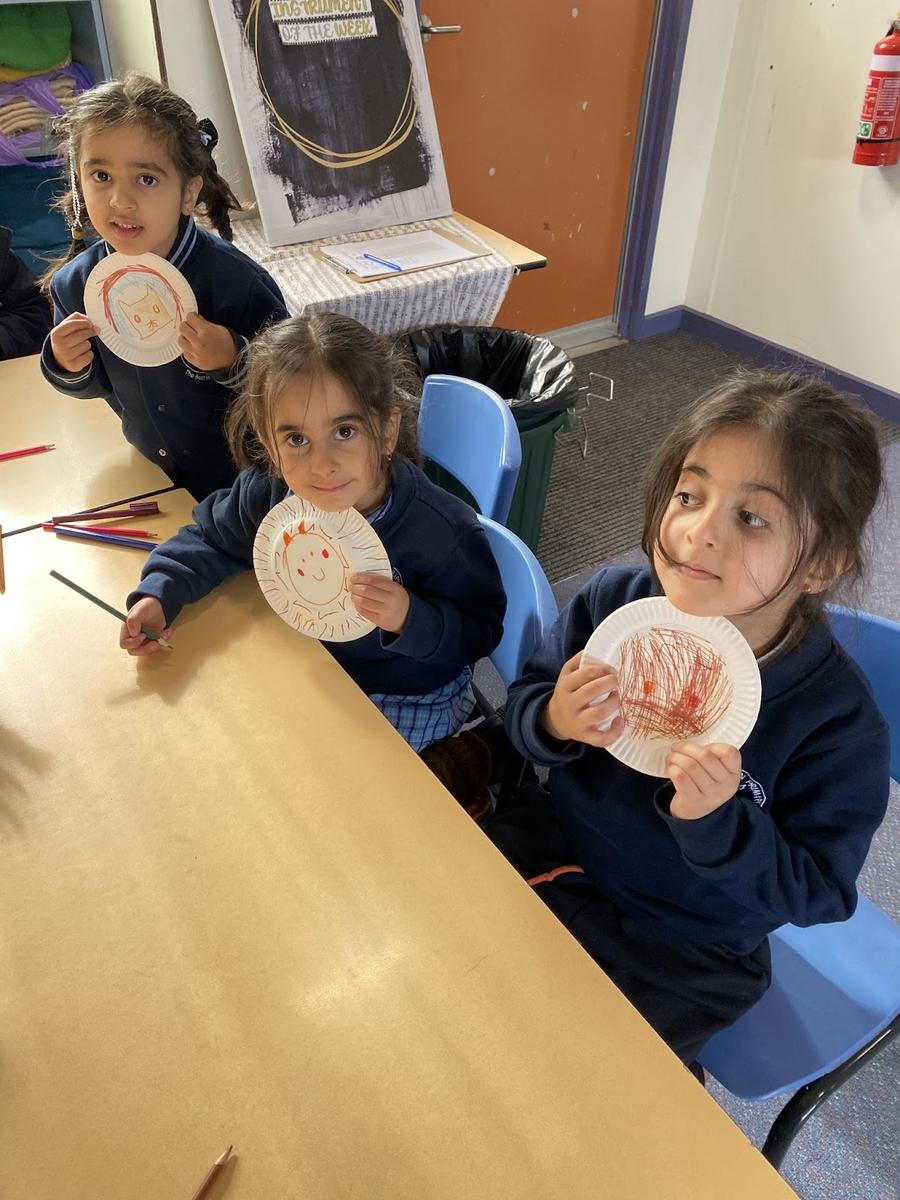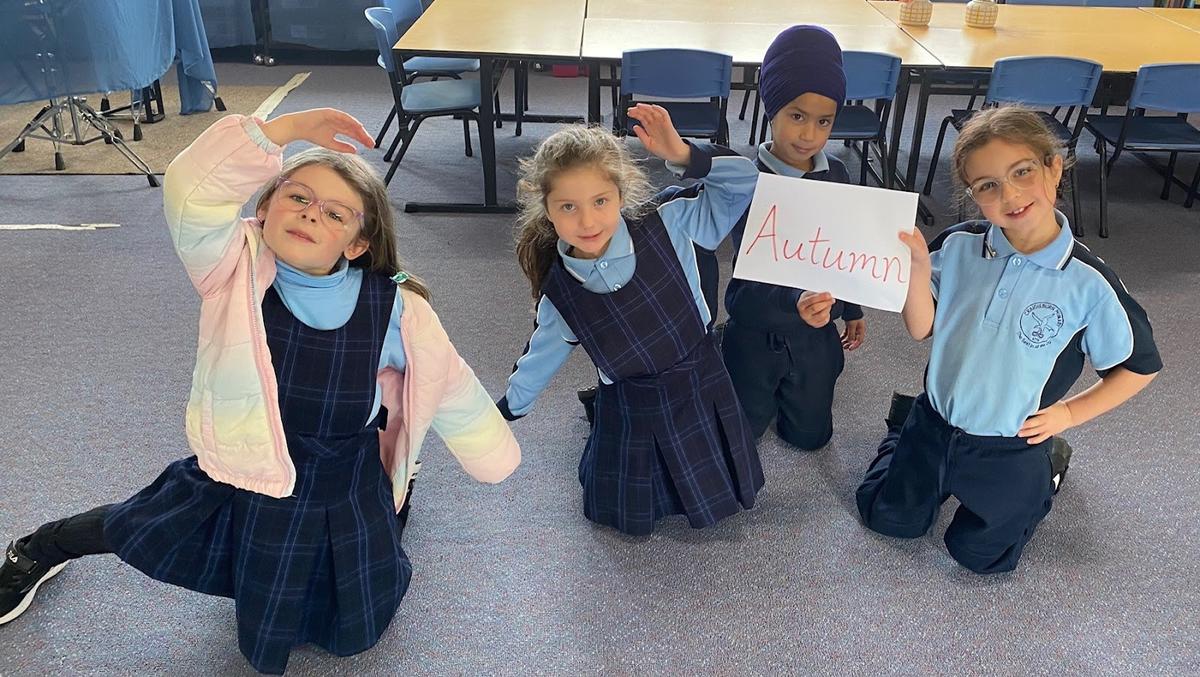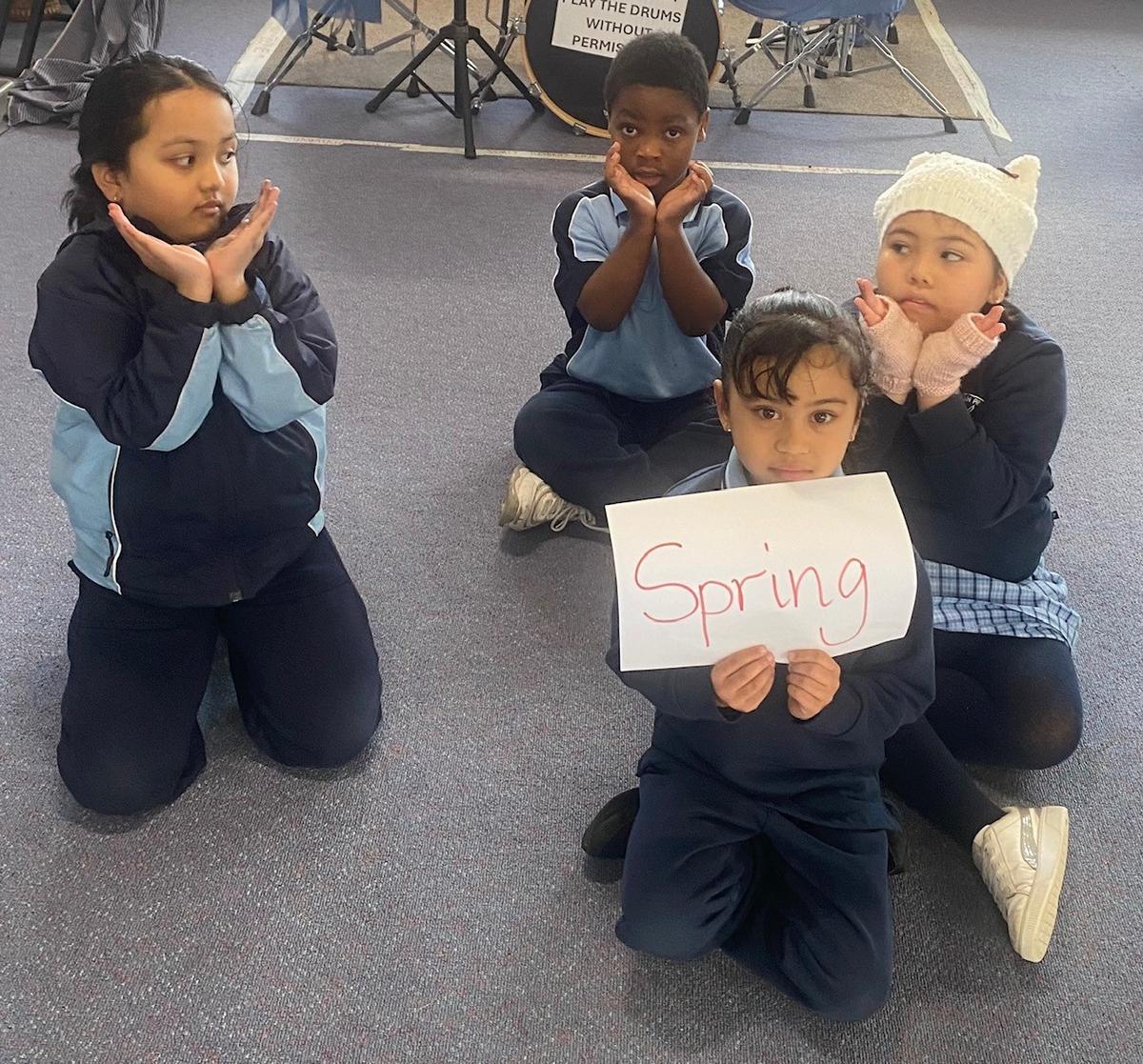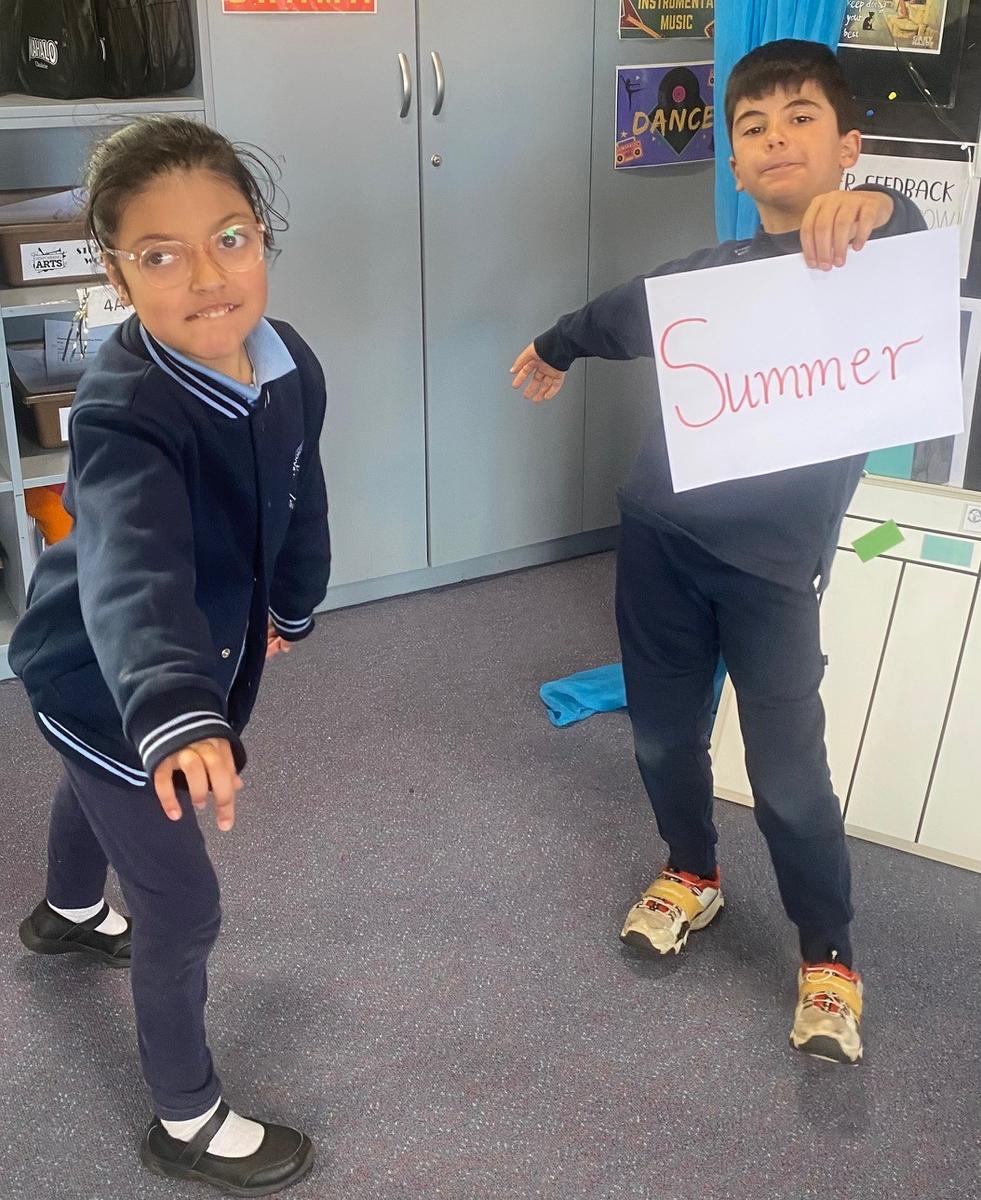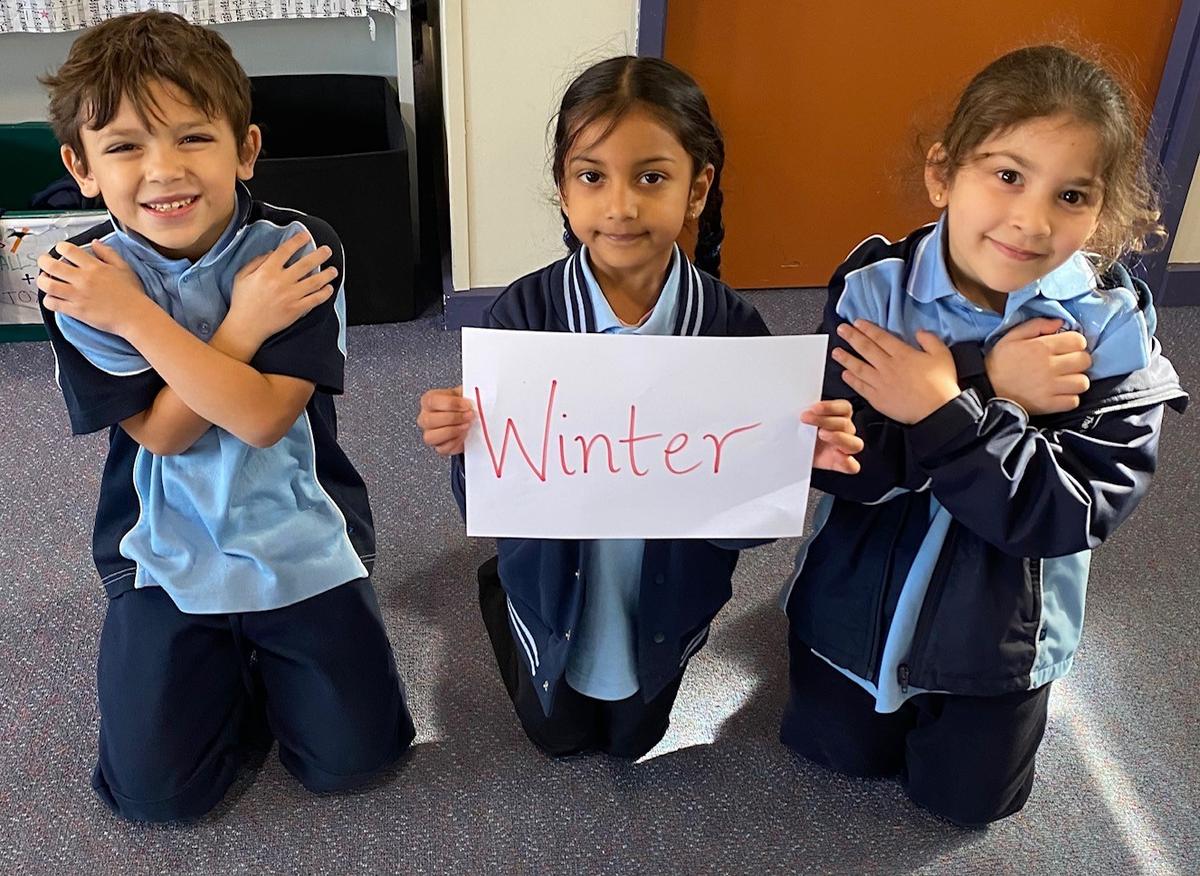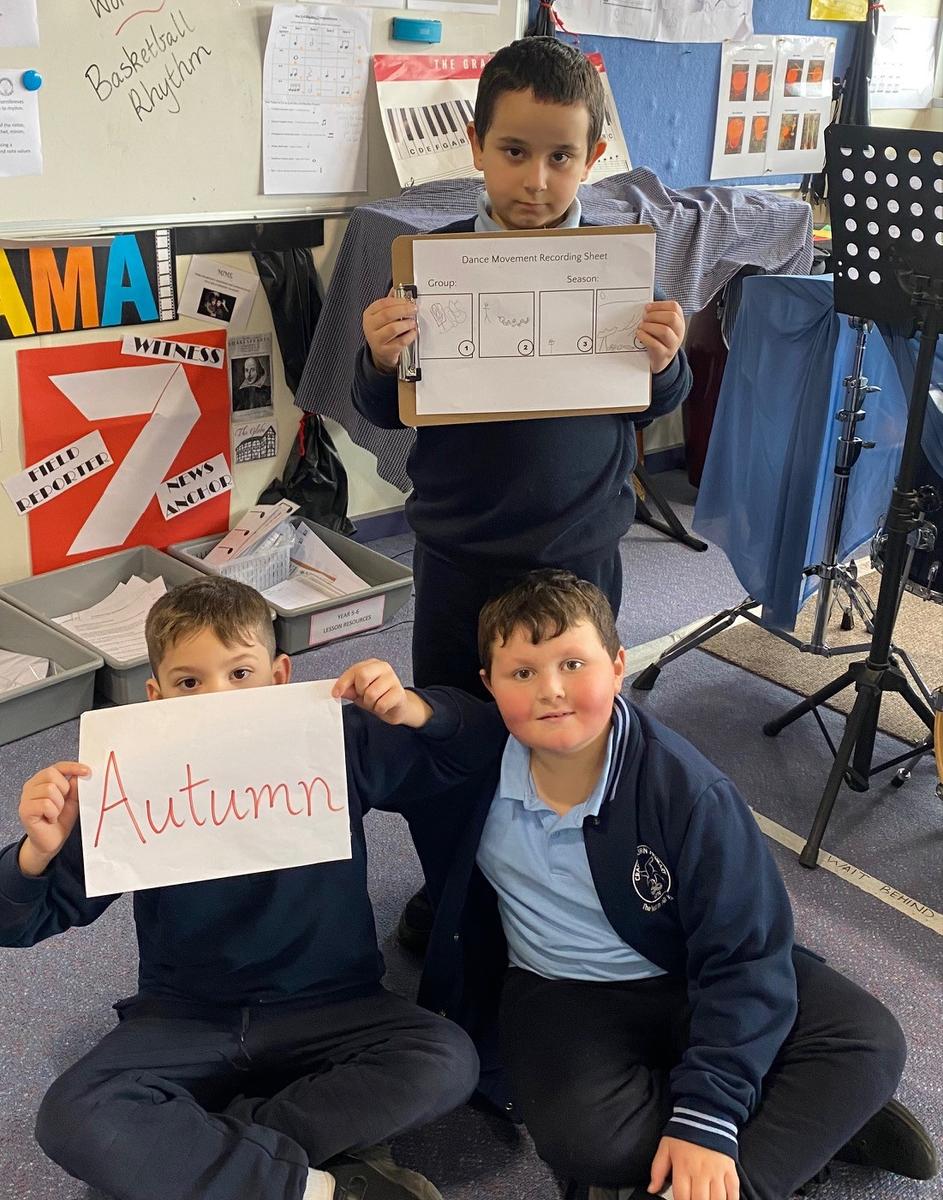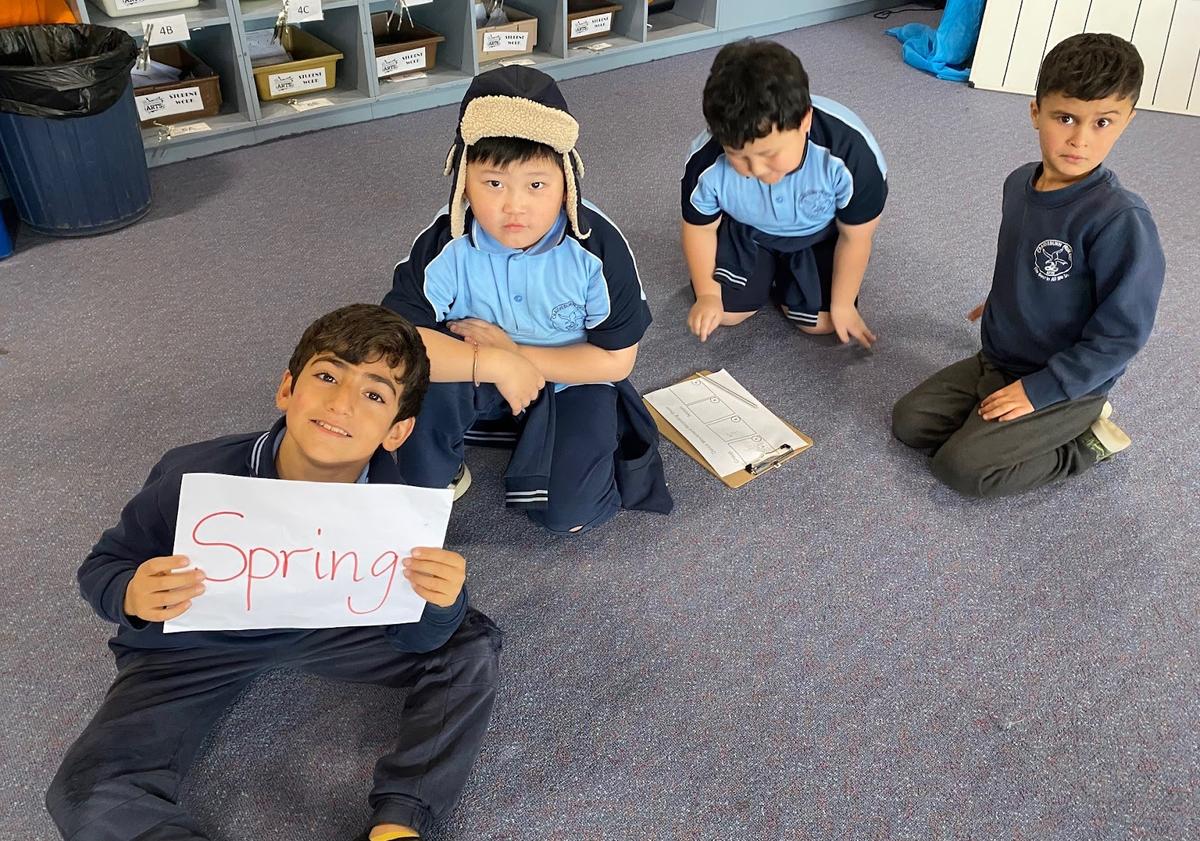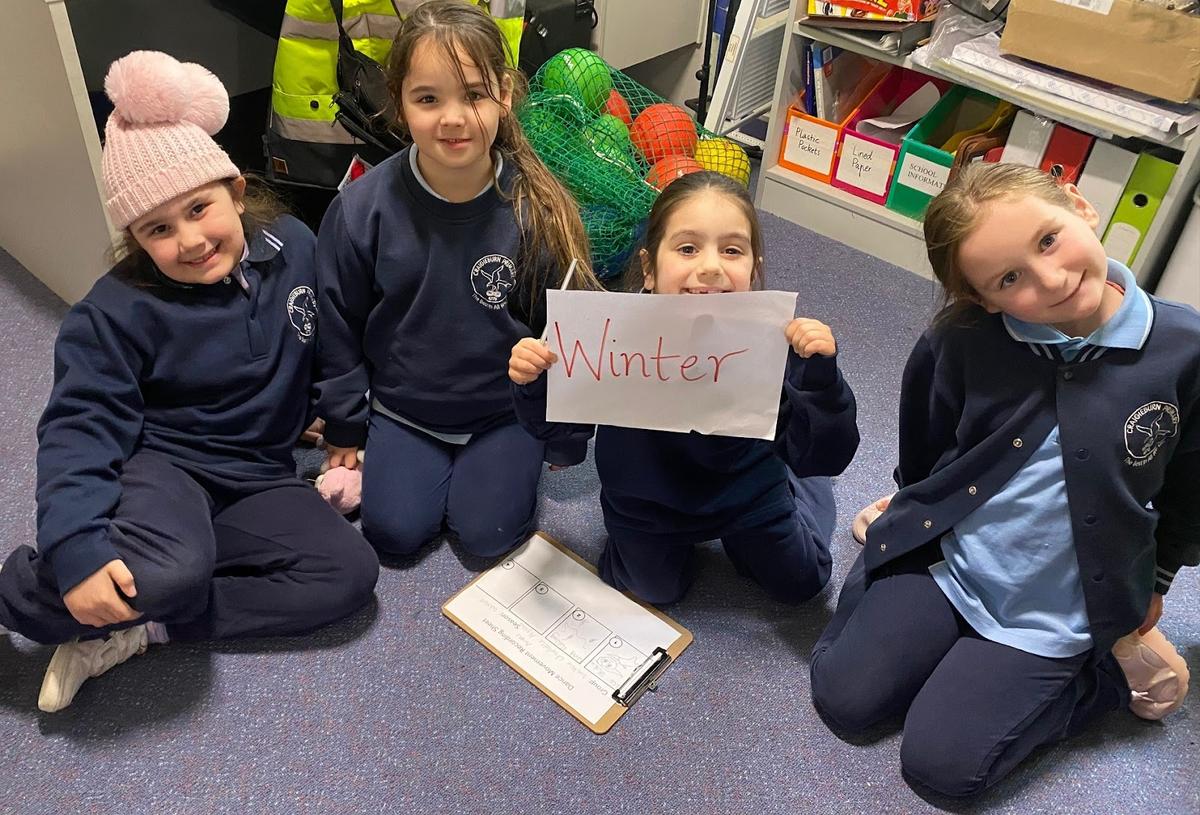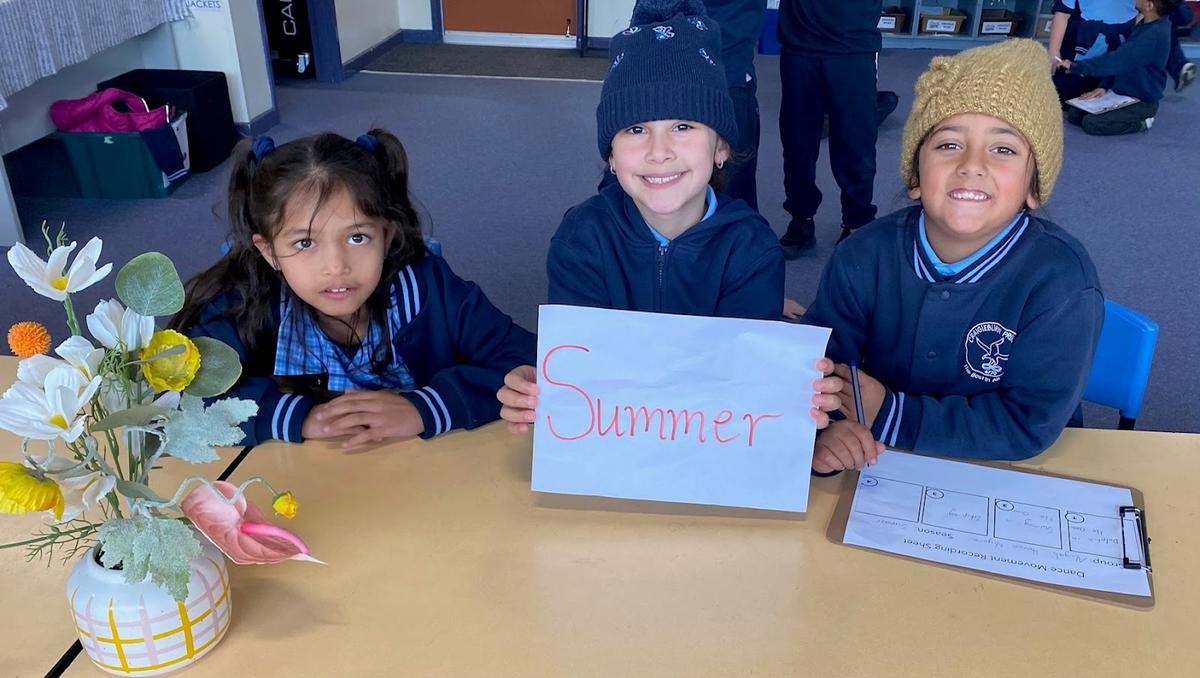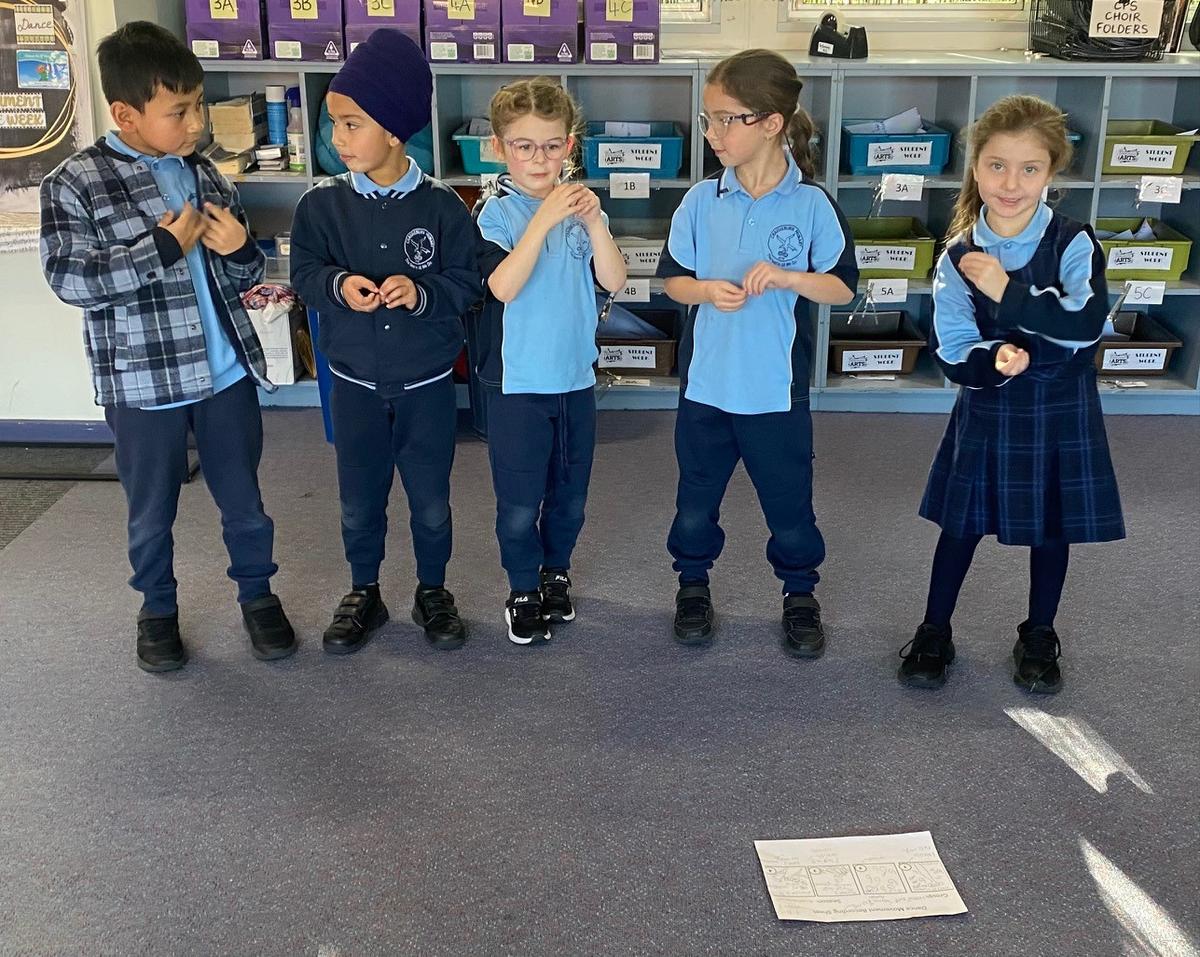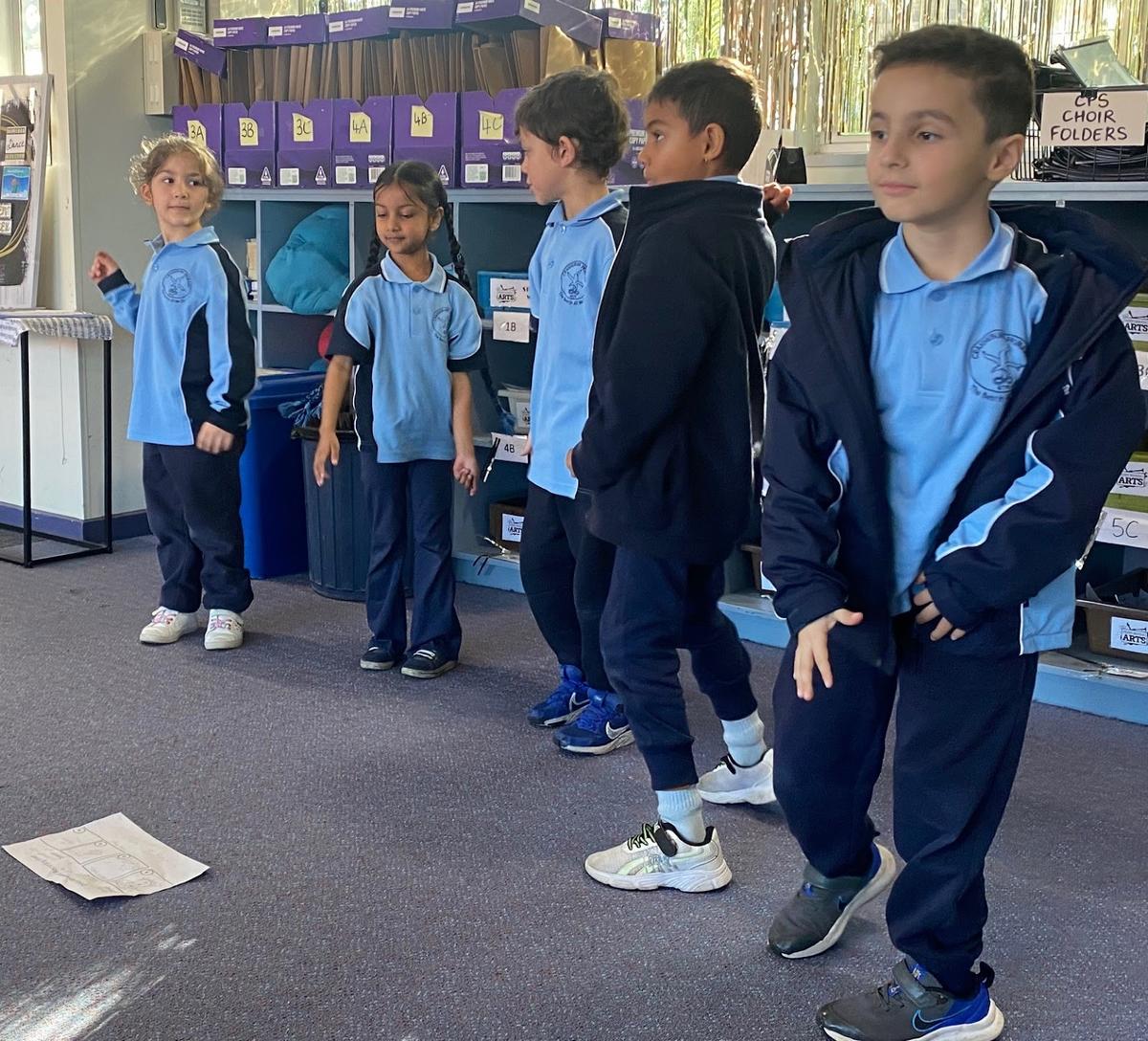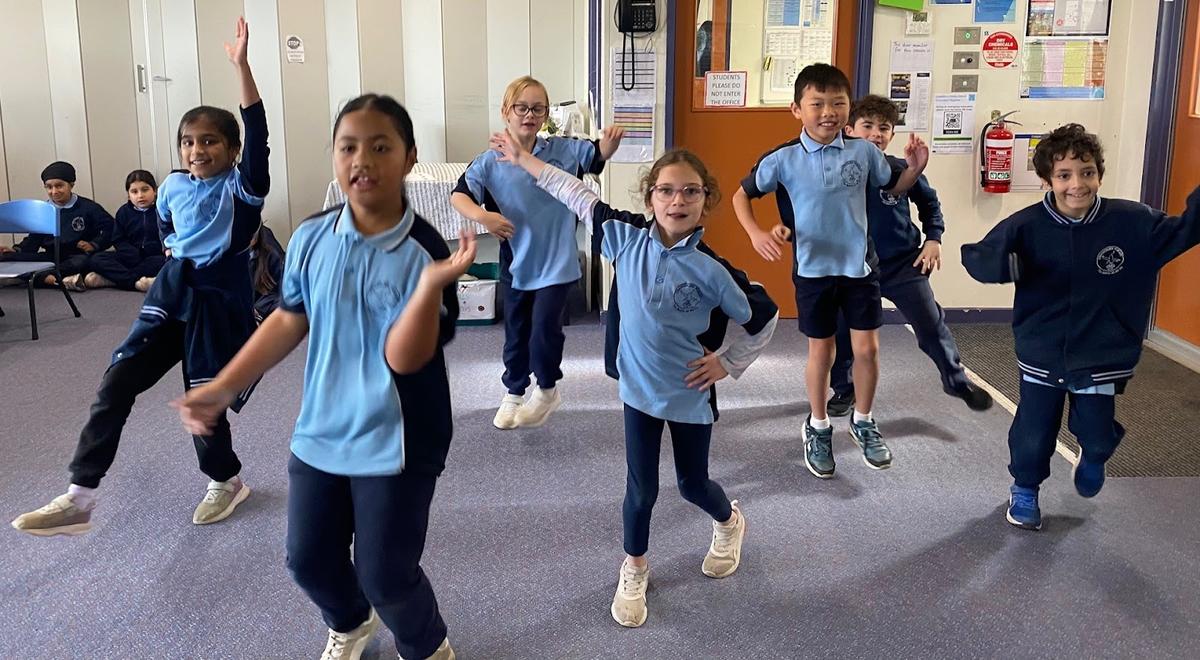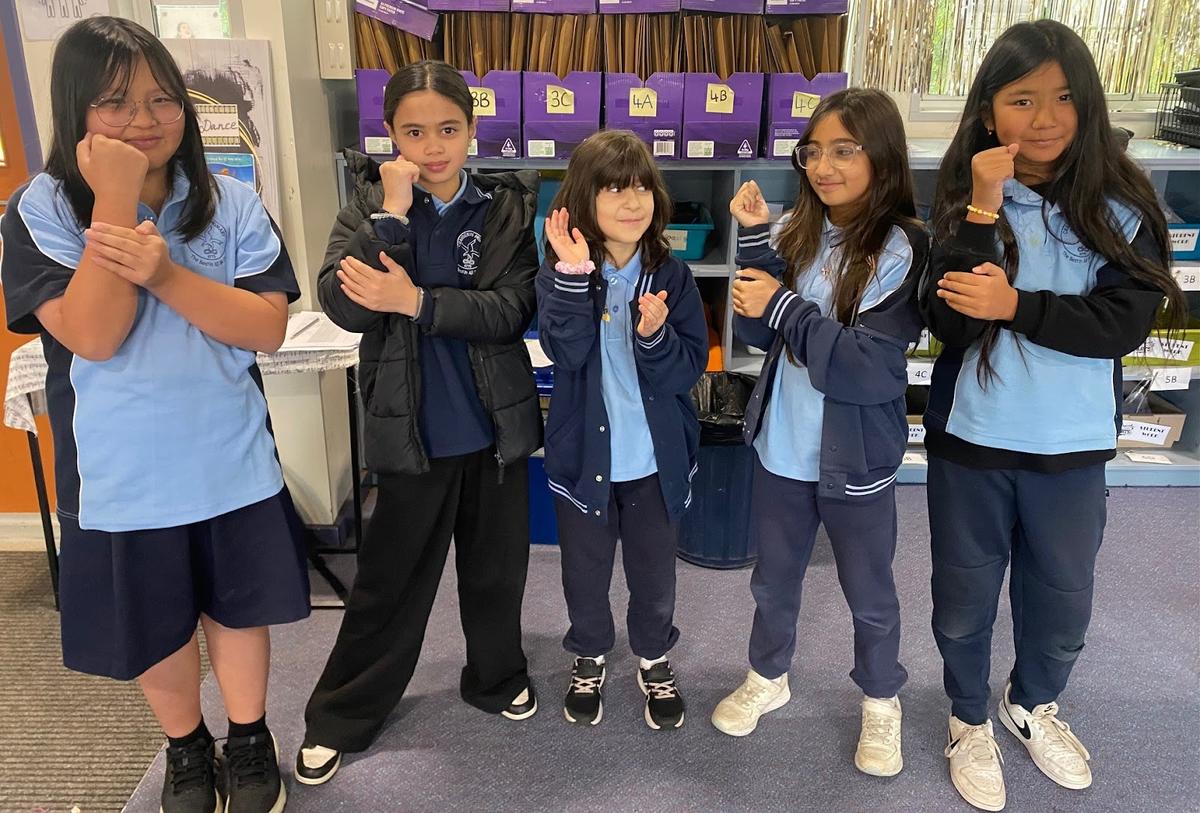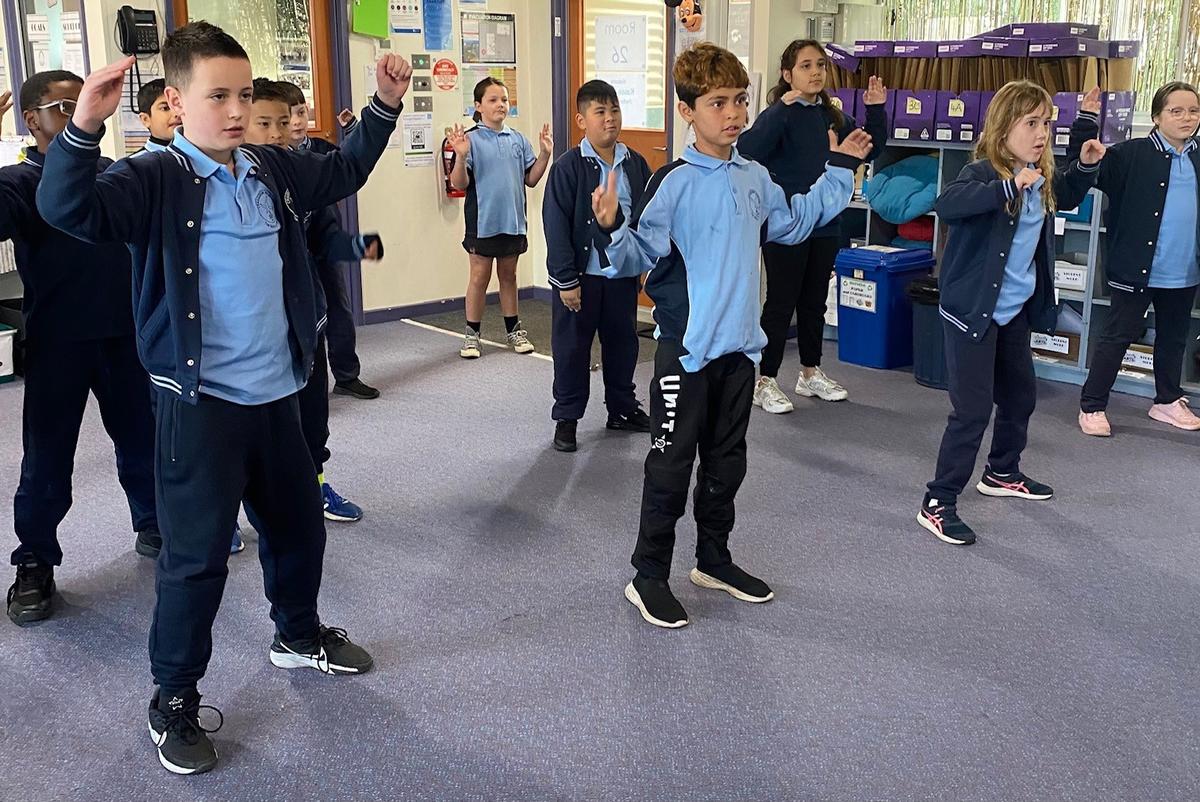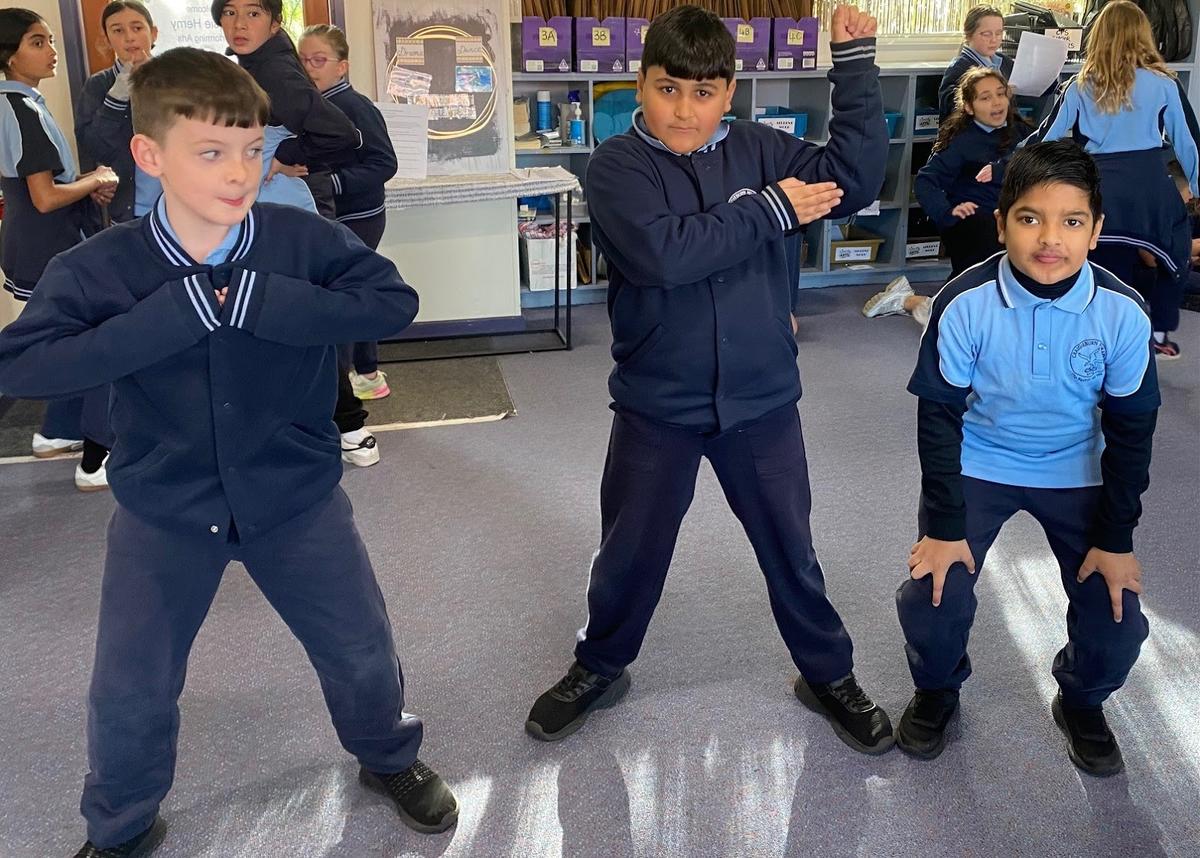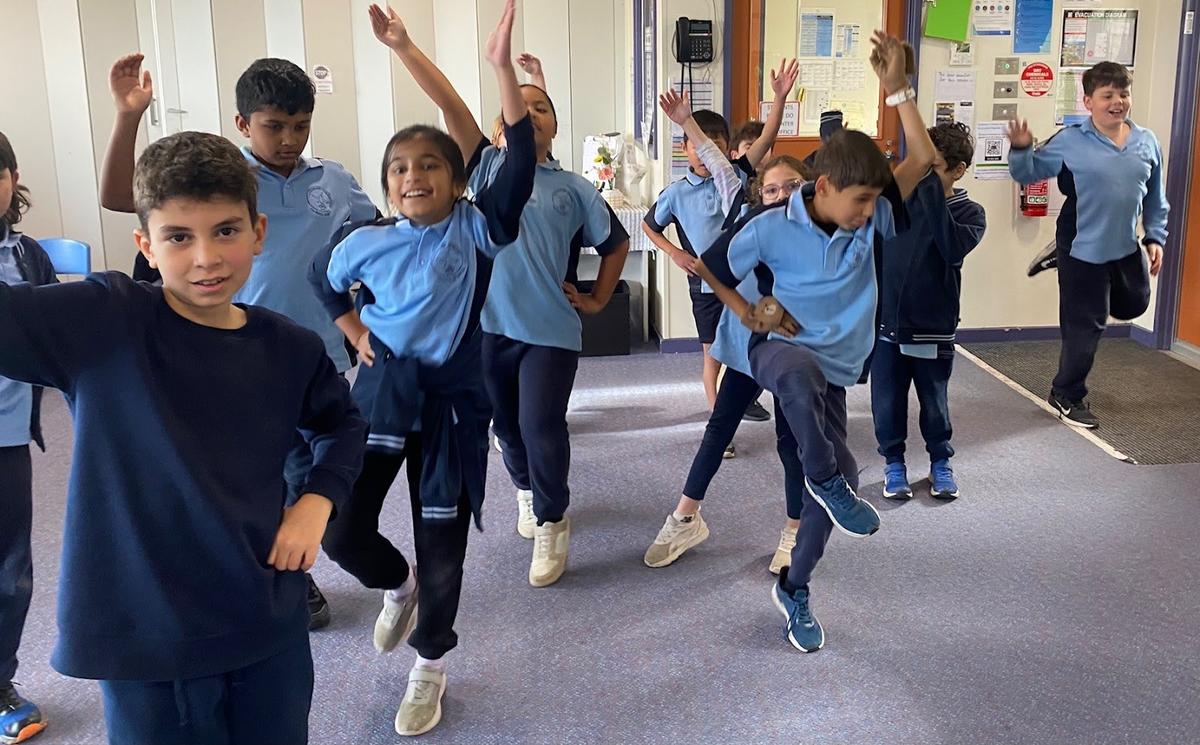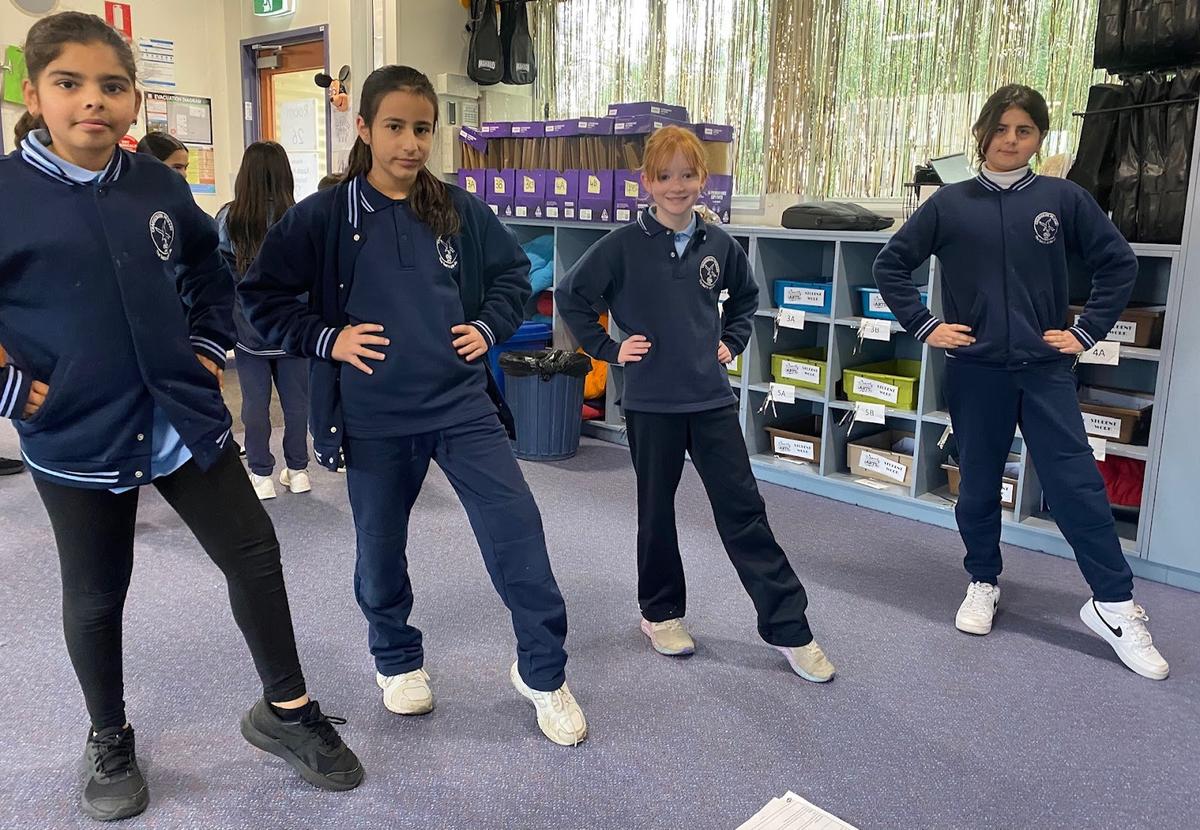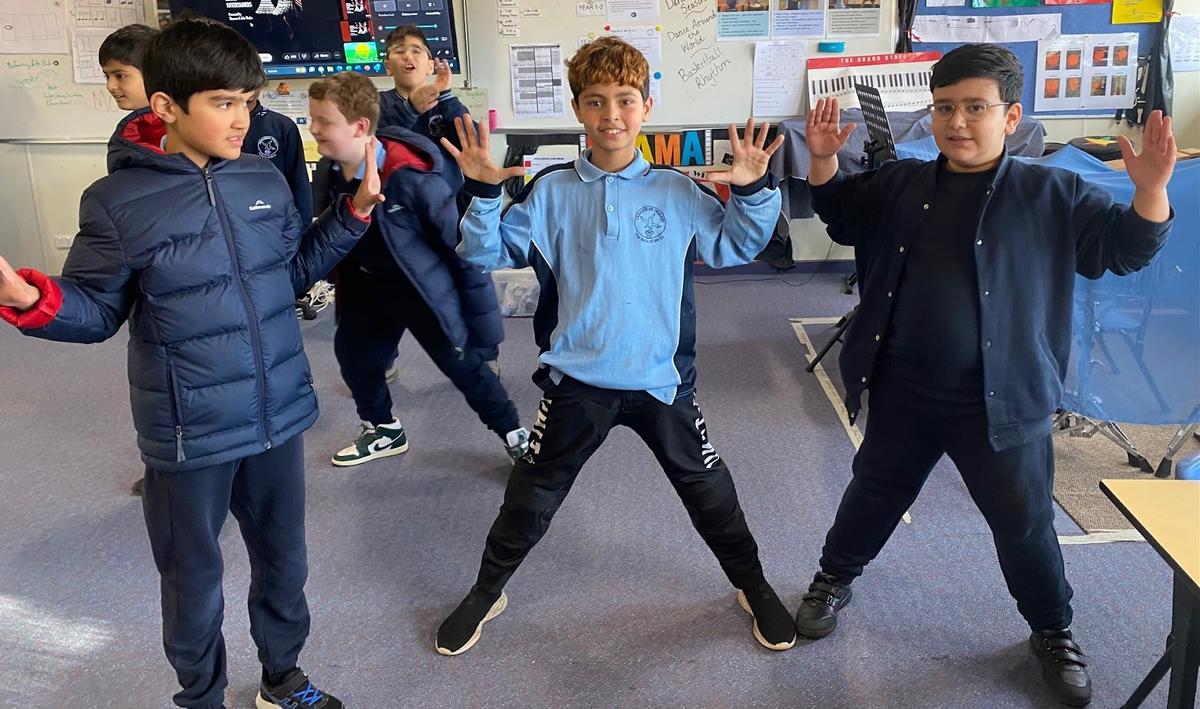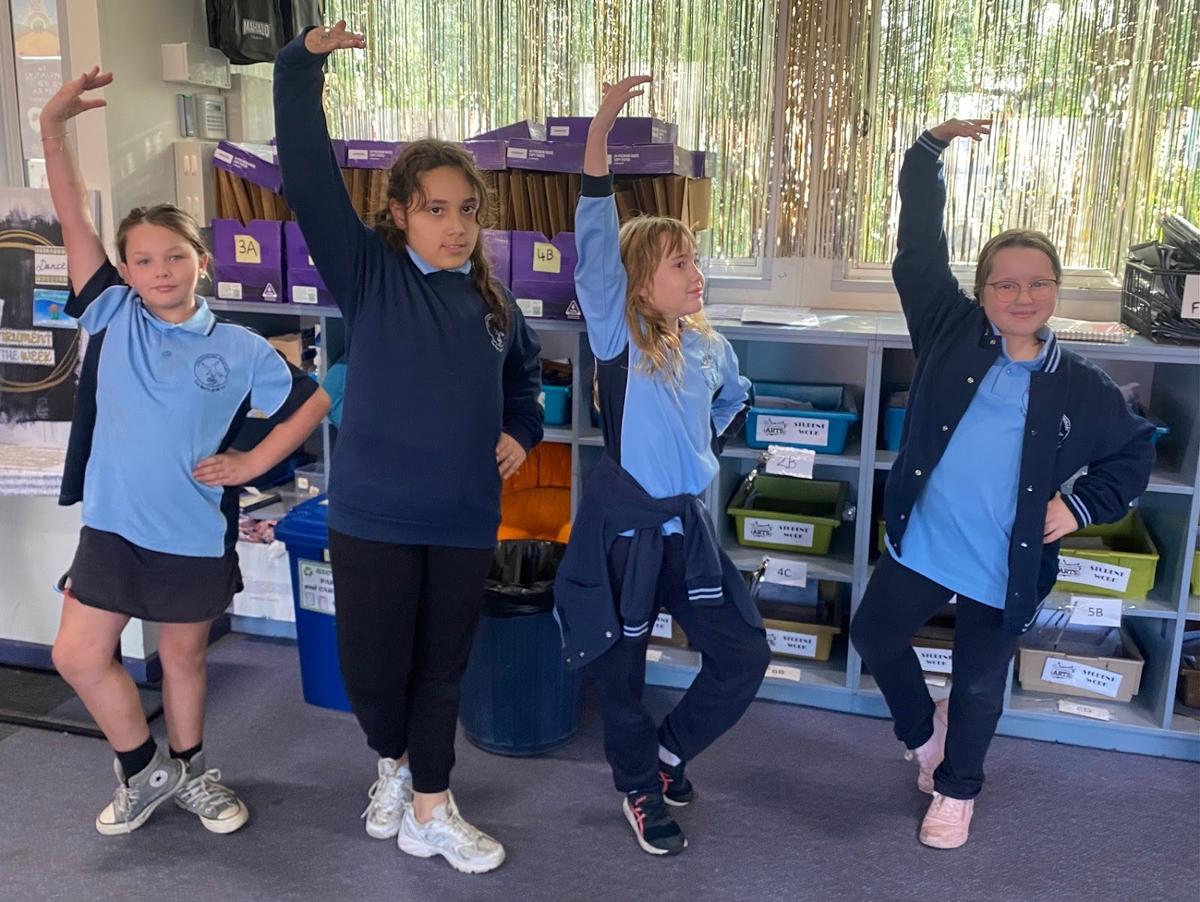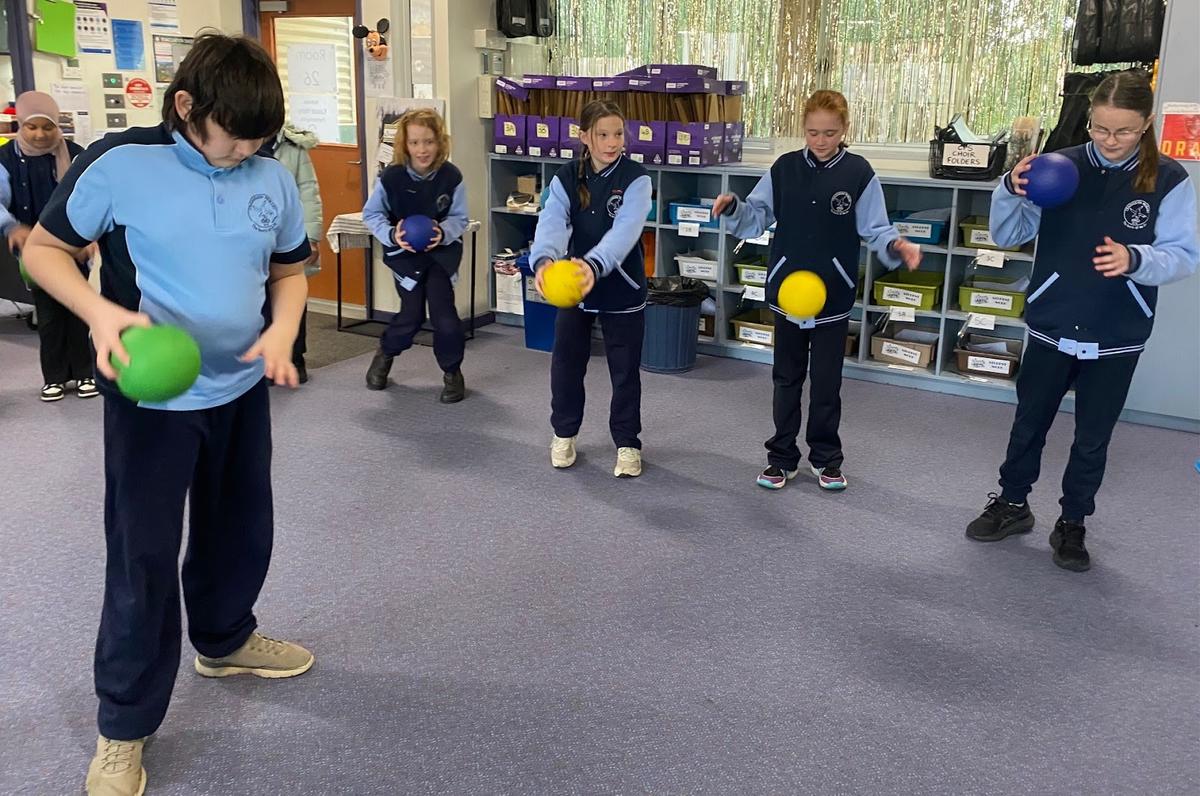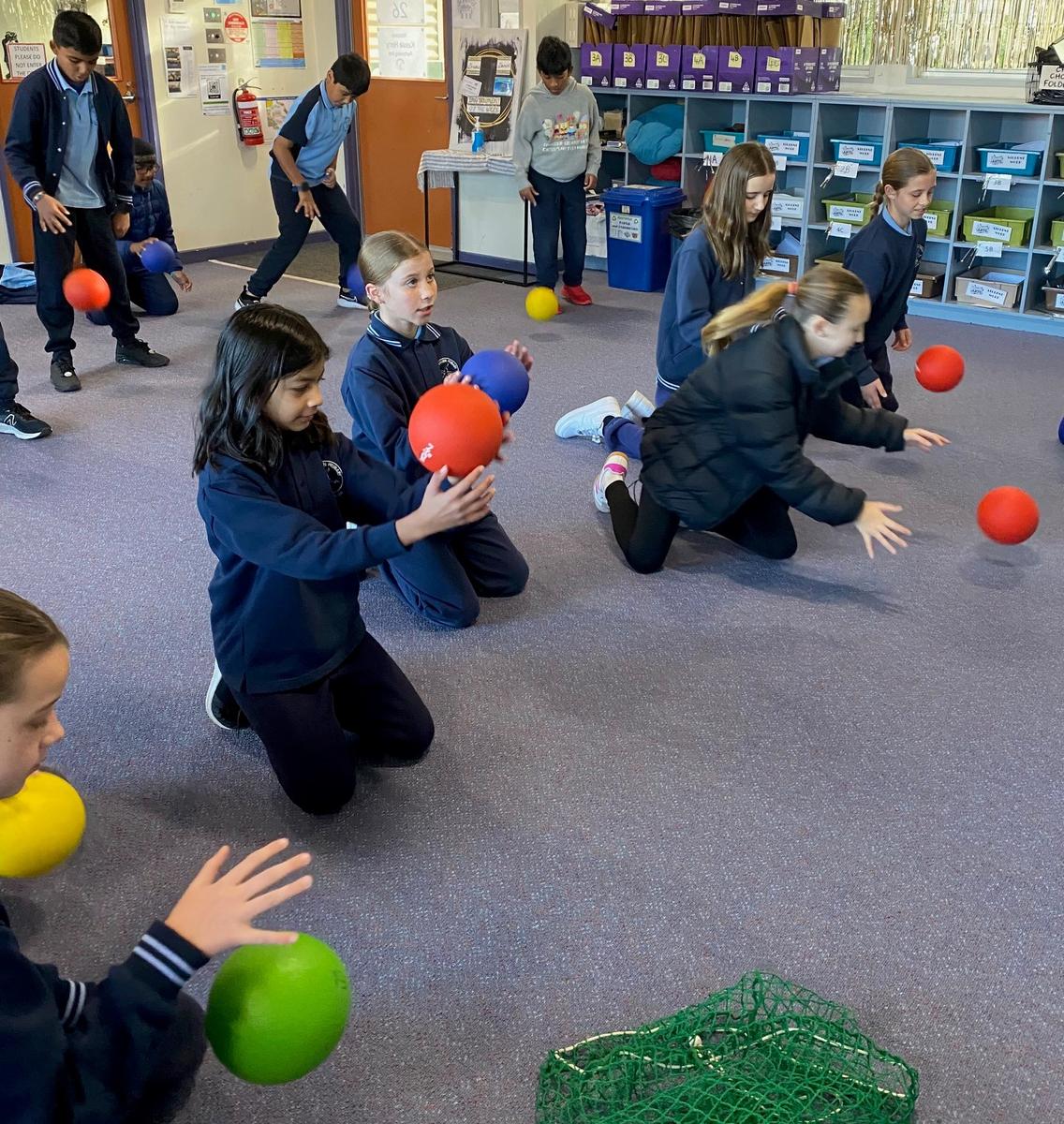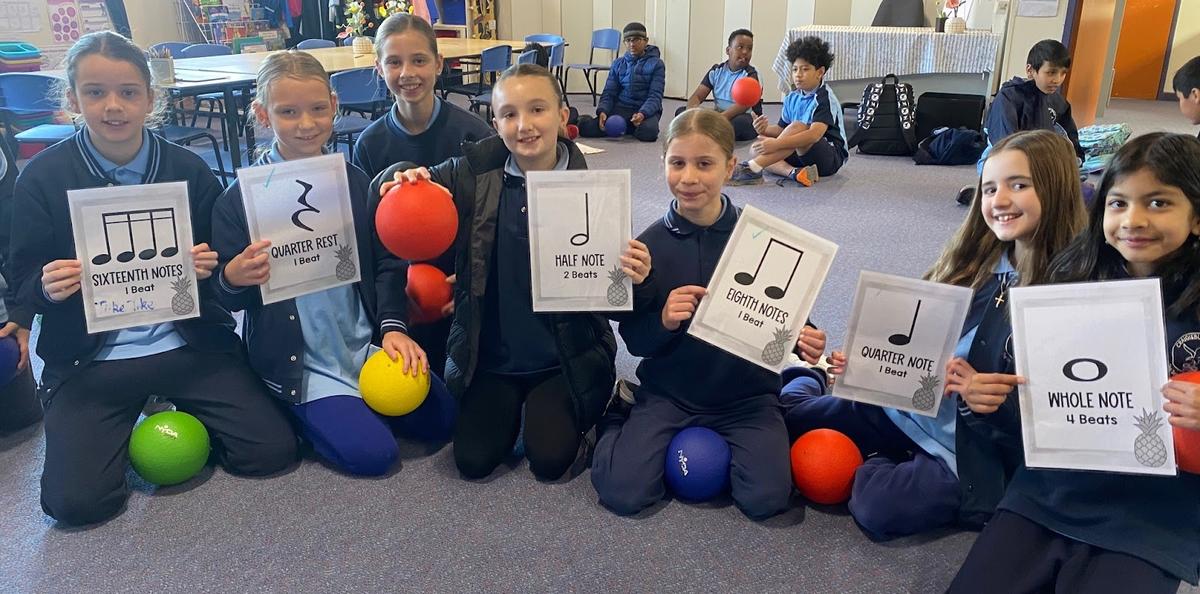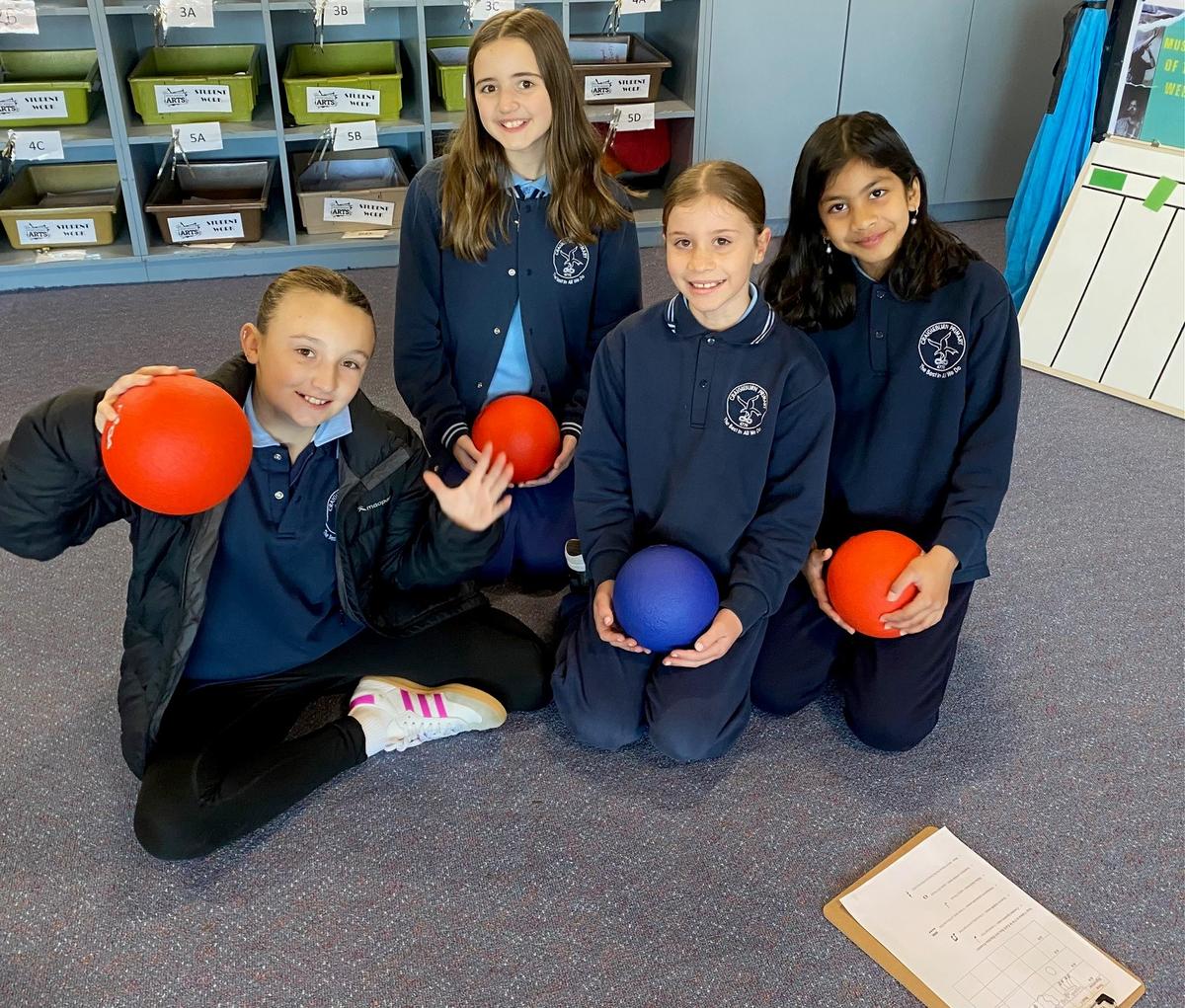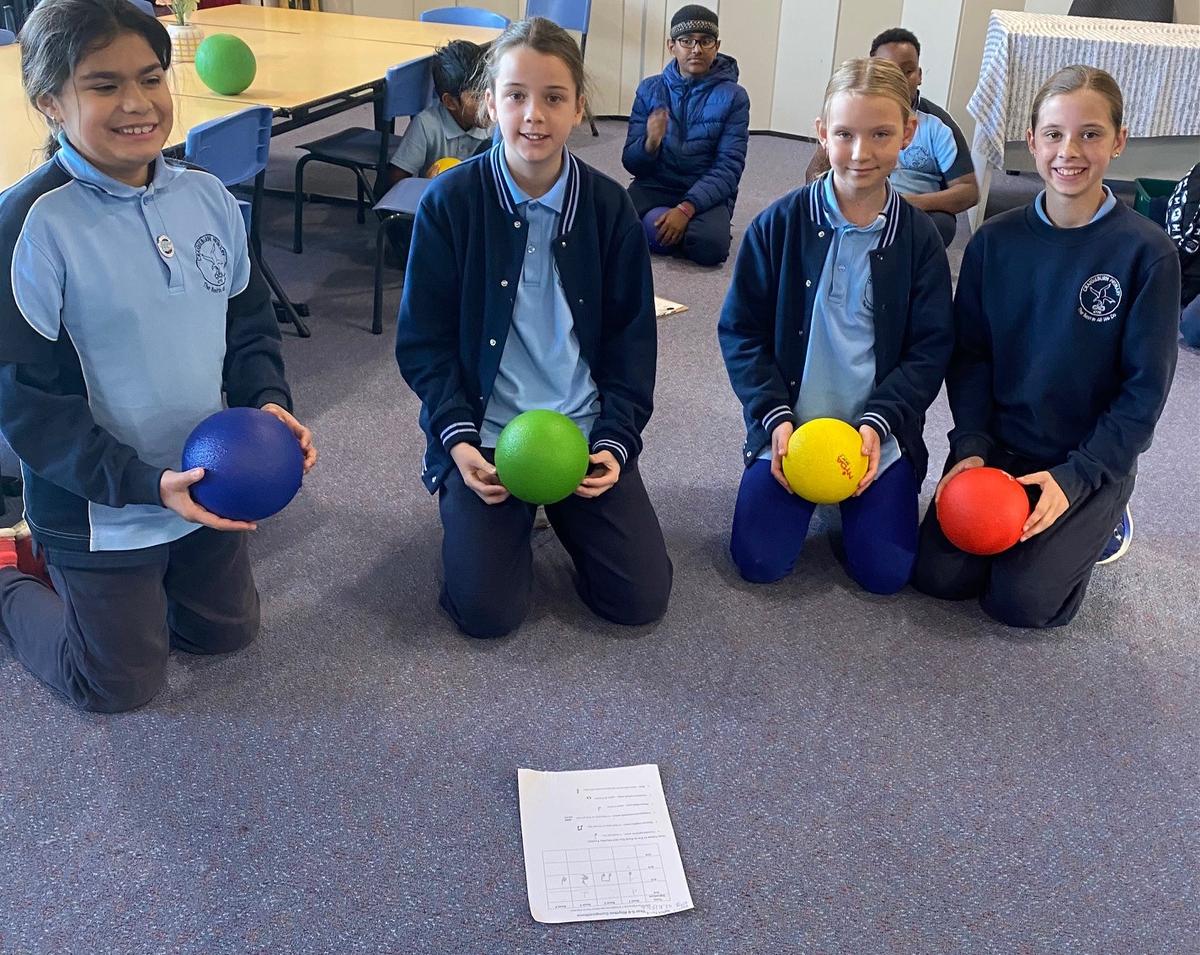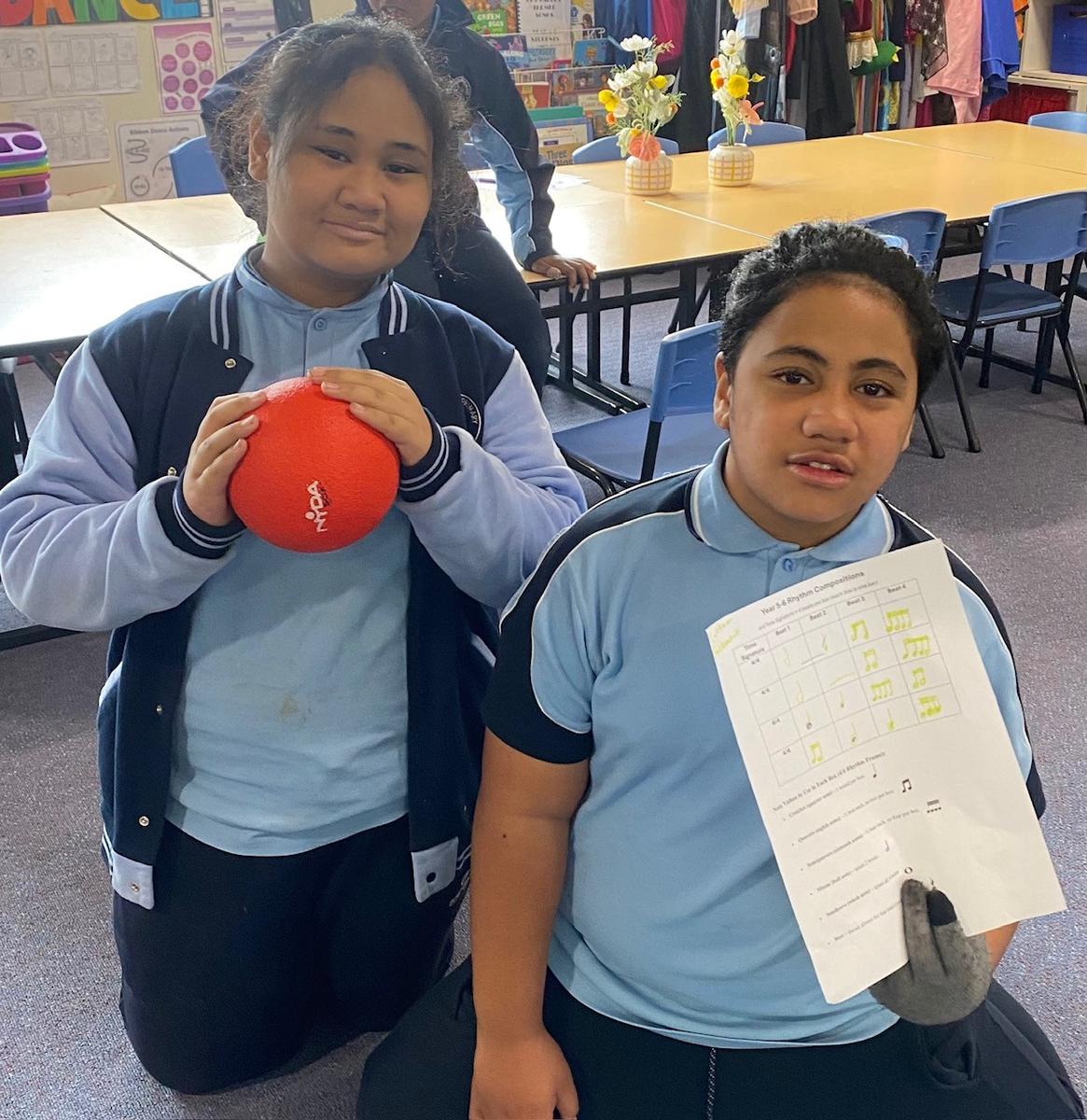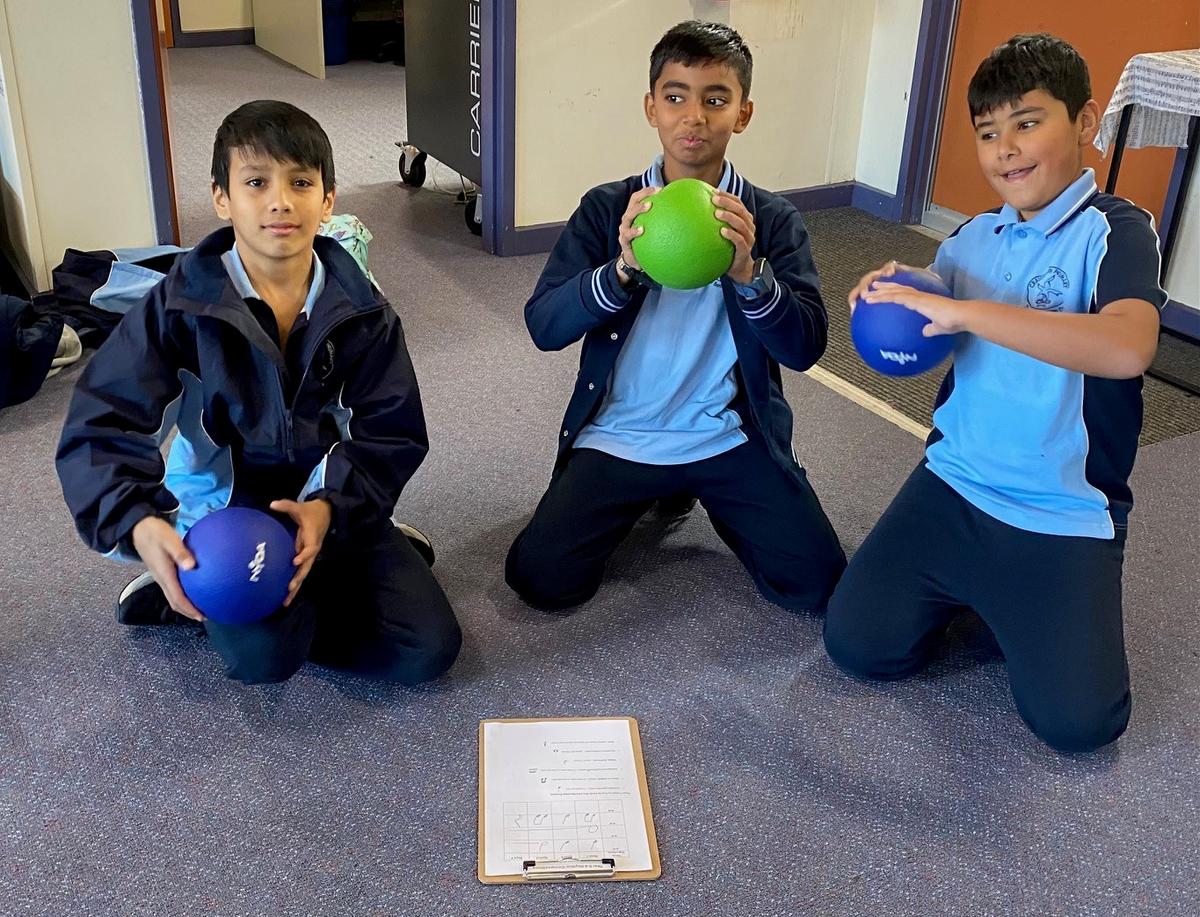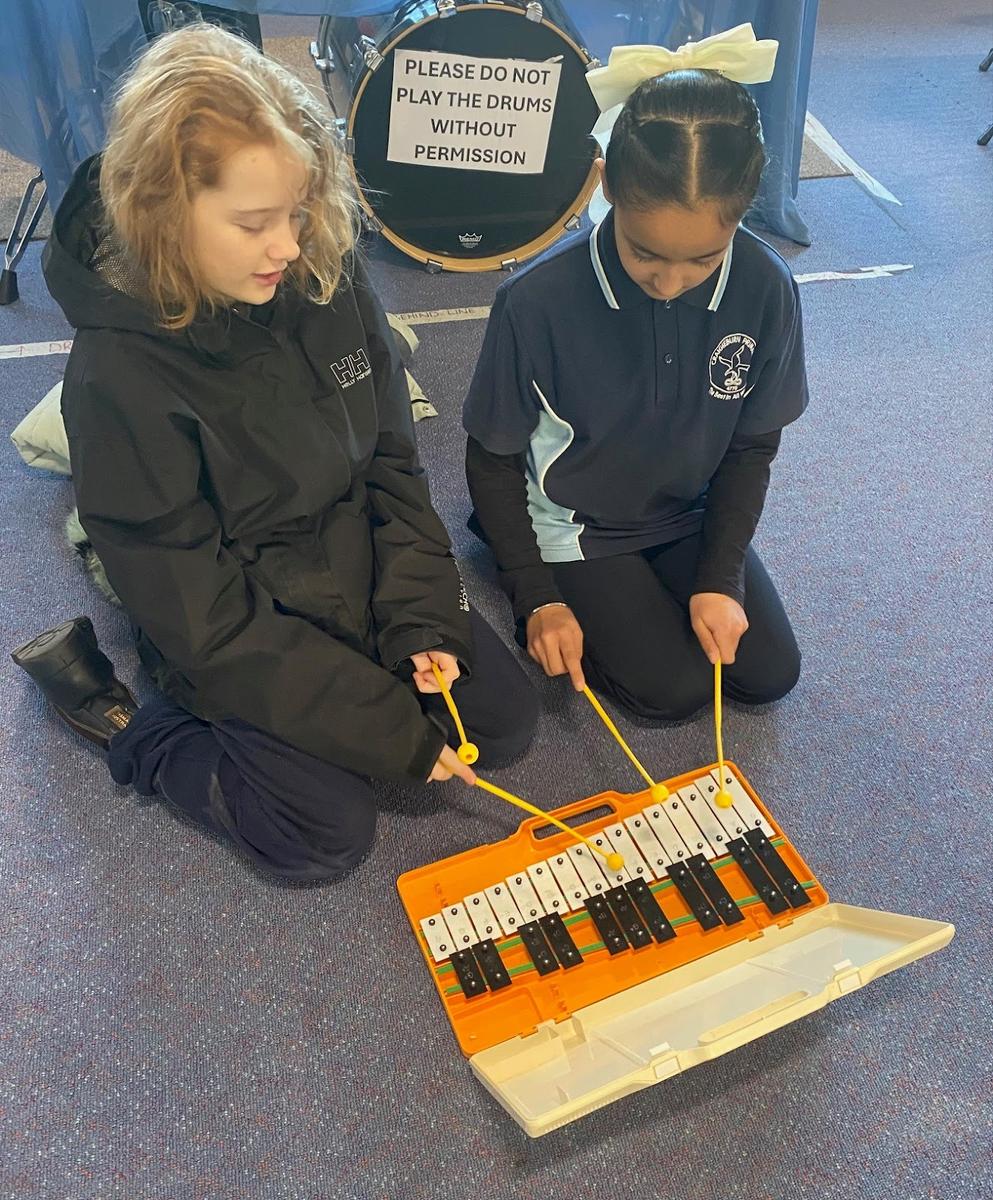Performing Arts

Foundation
Foundation students had the fun opportunity to create their very own Gingerbread Man face masks! They chose a character from the story to make their mask. This hands-on activity helped students bring the story to life, encouraging imaginative play, creativity, and fine motor skills as they pretended to be the clever Gingerbread Man running through the story. They made their masks in Week 9 and acted out the story with their masks in Week 10.
“I liked making my mask with the new textas”. Jenan
“I made my mask as a fox”. Isaac
“I was the gingerbread man on my mask”. Aydin
“I liked acting out the story of the Gingerbread Man”. Pramosh
Year 1-2:
In week 9, students created a short dance motif based on a season. They combined 3 to 4 locomotor and non-locomotor movements into a sequence using unison and repetition. Students explored different body parts to express their chosen season, such as representing blooming flowers for spring, ice-skating for winter, beach activities for summer and wind blown leaves for autumn. They reflected on how their movement choices helped communicate the mood and imagery of the season.
In Week 10, students rehearsed and performed their seasonal dance in small groups, focusing on clear movements, smooth transitions and synchronisation. They explored how dance can express ideas about seasons through movement and music. After performing, students reflected on their experiences by sharing how it felt to perform and identifying their favourite part of the dance.
Here’s what students had to say:
Aman (1A): “My favourite season is Winter because I made snowball movements”
Mokshitha (1A): “My favourite season is Spring and making flower blooming movements”
Nayat (1A): “I enjoyed dancing Winter and making a snowman and skating”
Burak (1A): “My favourite season is Spring”
Hugo (2B): “We were doing a dance move for Performing Arts and we had a bunch of fun”
Hareem (2B): “We were doing Summer- dolphins in the ocean, jumping on the sand because it was hot”
Hunter (2B): “We did Autumn and my move was a flower in the wind”
Charlotte (2B): “We did Winter and did ice-skating, snowballs, birds flapping and wind blowing”
Images: Students choreographing their seasonal motif in groups
Images: Students performing their seasonal routines
Year 3-4: Mrs Herny
In week 9, students explored and performed movements from different cultural groups, including the Māori Haka and the Scottish Highland Fling. They compared and contrasted these dances using the elements of dance and practised fundamental steps to express the unique characteristics of each dance. It was great to see such excellent participation and a willingness to try new movements! Students reflected on their learning and considered the strengths and challenges they encountered in performing these cultural dance movements.
In week 10, students explored the Samoan Sasa and body percussion movements that are part of traditional Samoan dance. They worked in groups to create and structure short sequences using choreographic devices like unison, repetition and tempo changes. Reflecting on the lesson, students recognised how the Samoan Sasa uses energy, levels and body parts to express traditional dance movements.
Here’s what the students had to say:
Grace (3C): “We learned about traditional dancing”
Leo (3C): “It was hard to keep balance but we all tried”
Sadie (3C): “I was trying my best and everyone else was too”
Lyric (3C): “I learned the New Zealand Haka”
Holly (3C): “We did some movements from different countries”
Deepti (3C): “My favourite was the Scottish dance”
Seth (4B): “Our group was doing the Highland Fling steps”
Shishir (4B): “My group was doing the New Zealand Haka”
Heidi (4B): “My group and I were trying to do the Highland Fling and some of the steps are pointing and jumping”
Hafsa (4B): “I liked doing the Scottish steps as it was high energy”
Eliana (4C): “I had fun doing the Haka because it was really cool to learn another culture”
Jahnavi (4C): “I liked the Highland Fling. It was pretty hard and that’s why it’s special!”
Images: Students exploring movements from Scotland and New Zealand
Year 5-6
In Week 9, students reviewed a variety of musical symbols, including crotchets, minims, semibreves, quavers and rests. To reinforce their understanding, they participated in interactive rhythm activities using soft balls, bouncing in time with the music and matching movements to note values. Through individual and group practice, they developed their timing and coordination and performed their original rhythm compositions to demonstrate their understanding of beat and duration.
In Week 10, students began their introduction to chords and explored how they create harmony in music. Using chromatic glockenspiels, they worked in groups to build triads using notes from the C major scale, such as C–E–G and G–B–D. They practised playing chord progressions in time and then experimented with different combinations to compose their own short progressions. This helped them build confidence in creating harmonious musical sequences.
Here’s what students had to say:
Jamal (6D): “We practised bouncing the ball to the rhythm we made up”
Carter (6D): “First we did a whole note then we did low dribbles on the ground for ti-ti. We did a dribble for the quarter note!”
Alisha (6D): “We are learning how to use rhythms while bouncing a ball and practising. Ta was one bounce and ti-ti was small dribbles close to the ground!”
Aishani (5C): “It was fun practising notes using soft balls”
Taylor (6C): “It has been very fun to learn about and read the musical notes”
Lucy (6C): “I loved learning about musical notes and how to read them”
Images: Students applying their musical notation knowledge in fun ball activities
Images: Students performing their original rhythm compositions using soft balls
Images: Students learning basic chords and playing chord progressions

